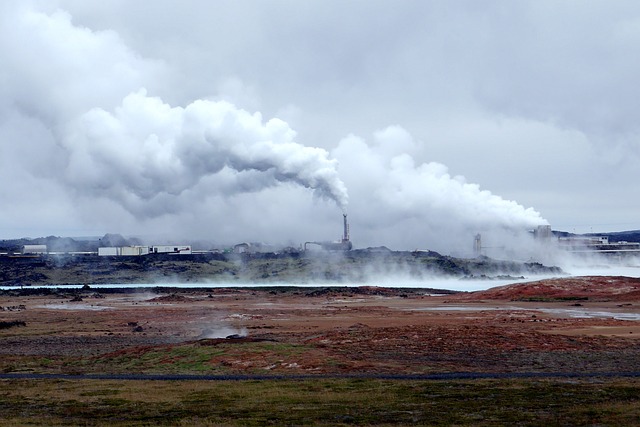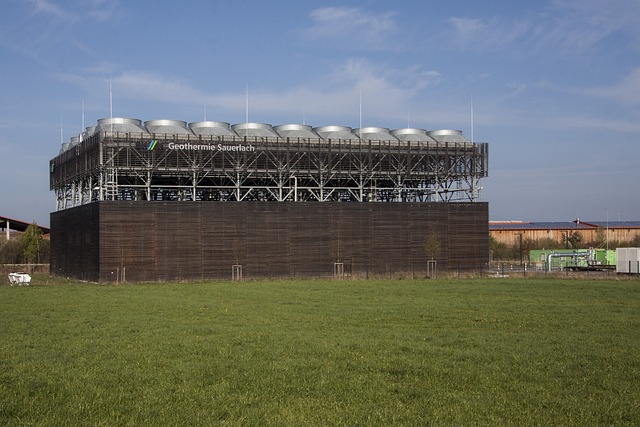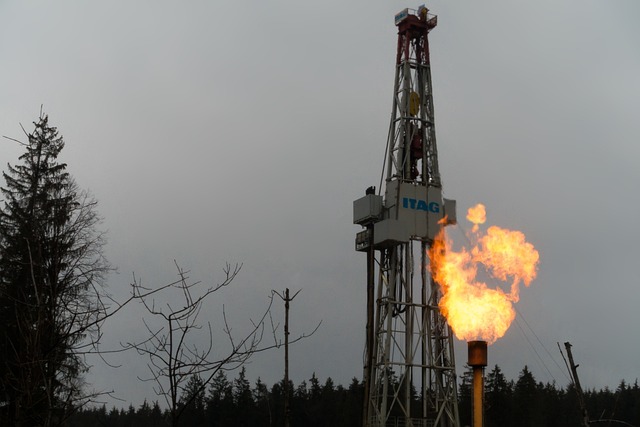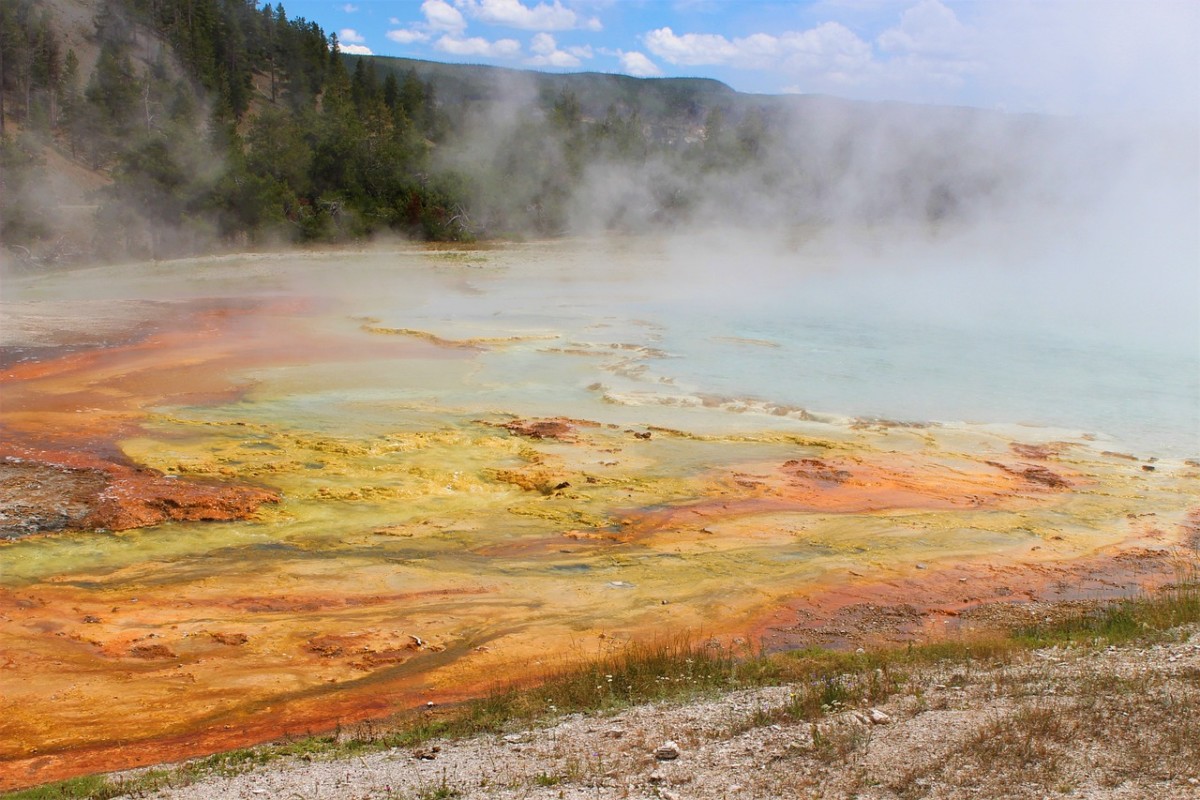Environmental impacts of geothermal energy
What are the environmental impacts of geothermal energy? Geothermal energy is a renewable source of power that has gained traction in recent years as more and more people look for sustainable alternatives to traditional energy sources.
This type of energy is derived from the natural heat found beneath Earth’s surface, and it can be used to generate electricity and heating.
While geothermal energy has many advantages, such as being clean and a renewable resource, it also comes with some environmental impacts.
In this article, we will explore the environmental impacts of geothermal energy and answers the question of whether this form of energy production is truly green so that readers can make an informed decision when considering potential sources of power.
The extraction process involved in tapping into geothermal resources can cause disruption to local ecosystems through the release of gasses like sulfur dioxide, nitrogen oxides, carbon dioxide, and hydrogen sulfide.
Additionally, water polluted with these gasses may then be released back into the environment after use in a geothermal plant or well.
Does geothermal energy cause pollution

Geothermal energy has been long touted as a clean, renewable source of energy. But does it actually cause pollution?
The primary benefit of geothermal power plants is that they do not emit pollutants such as carbon dioxide or sulfur oxides into the atmosphere like traditional fossil fuel-burning power plants.
Thus, geothermal power plants can be seen as a viable way to reduce air pollution from burning coal and natural gas for electricity generation.
However, other environmental issues are associated with geothermal energy production, such as its potential contribution to global warming due to the release of greenhouse gases from hot springs used in some forms of production.
Additionally, some forms of geothermal development can have adverse effects on local ecosystems due to land disturbances caused by drilling and piping activities.
Is geothermal energy safe for the environment?
Geothermal energy is a renewable, clean source of power that is becoming increasingly popular in many parts of the world.
This type of energy utilizes heat from beneath the earth’s surface to generate electricity and provide heating and cooling for homes and businesses. But what are the environmental impacts associated with this form of energy? Is geothermal energy safe for the environment?
The good news is that geothermal energy does not emit any greenhouse gases or other harmful toxins into the atmosphere, making it one of the safest sources of renewable energy available.
Additionally, geothermal plants have relatively small land use requirements compared to other forms of power generation, reducing any potential negative effects on local wildlife.
Furthermore, they require significantly less water use than traditional fossil fuels such as coal or natural gas. This makes them much more sustainable than those traditional sources.
Geothermal power plant emissions compared to fossil fuels
As energy sources go, geothermal power plants are one of the most environmentally friendly ways to generate electricity.
Geothermal energy is derived from heat generated deep within the earth, and it can be utilized in many different ways. In comparison to fossil fuels, geothermal power plants produce significantly fewer emissions that are harmful to the environment.
Geothermal power plants emit only a fraction of the amount of carbon dioxide (CO2) that fossil fuel-based plants such as coal plants.
Additionally, they release no sulfuric oxide or nitrogen oxide into the atmosphere like their counterparts powered by coal and natural gas often do.
This makes geothermal energy a clean source of electricity without any overhead costs associated with mitigating air pollution from CO2 and other pollutants created through combustion processes.
How do geothermal systems work?

Geothermal energy is a renewable energy source that is becoming increasingly popular due to its potential environmental benefits. However, many people do not understand how geothermal systems actually work.
A geothermal system harvests energy stored in the Earth’s core by pumping water through subterranean pipes and transferring it back to the surface as steam or hot water.
This heat is used to generate electricity or provide direct heating for buildings and homes. The system works by drilling several wells deep into the earth and circulating hot water under high pressures through them before sending it back up to another well where it can be used in various applications.
What are closed-loop systems?
Closed-loop systems are an important aspect of geothermal energy production that must be considered when assessing its environmental impacts.
These systems involve drilling wells into the Earth and pumping water or a water and antifreeze solution through them to extract the natural heat from the ground. The heated liquid is then returned below ground, thus completing the loop.
This process can help reduce emissions associated with traditional heating sources like natural gas or oil, as it relies solely on renewable heat stored within the Earth’s core.
Closed-loop systems also have significant potential for mitigating climate change by reducing dependence on fossil fuels and increasing efficiency in energy generation from renewable resources like geothermal power plants.
Additionally, this type of system can provide a clean, reliable form of energy for many parts of the world that lack access to other forms of power generation due to location or political instability.
What are open-loop systems?
Open-loop systems are one of the primary techniques used to generate energy from geothermal resources.
This method utilizes water from an aquifer or other sources and uses it as a heat exchange medium in order to extract the natural heat stored underground in a geothermal reservoir.
Hot water is pumped up through the well and is directed into a heat exchanger, where it releases its thermal energy in order to rotate turbines and generate electricity. This process requires no further inputs other than water, making open-loop systems highly efficient when compared with closed-loop counterparts.
The main environmental benefit of using open-loop geothermal systems is that they do not create any emissions during their operation.
In addition, these systems do not require any additional fuel source for power production; instead relying solely on renewable energy sources such as hot springs or deep underground reservoirs.
What is hot dry rock energy?
Hot dry rock is a type of geothermal energy that has been gaining traction in recent years due to its potential to provide clean, renewable energy.
This form of heat extraction from subsurface rocks does not require any water or steam to be injected into the ground and can therefore be used in areas where hydrothermal resources are scarce.
The method works by drilling two wells into hot rock formations and pumping cold water through them; the resulting friction generates heat which is then extracted for use as an energy source.
The main advantage of this approach is its extremely low environmental impact compared to other forms of geothermal power production, as there is no need for any hazardous chemicals or fluids to be introduced into the environment.
Furthermore, since it requires minimal infrastructure and only minor surface disturbance, it has become increasingly attractive as a source of renewable energy in remote locations.
The global market for geothermal energy is currently dominated by the United States, with a capacity of 6.3 GW in 2016, followed by the Philippines (2.8 GW) and Indonesia (1.7 GW).
Geothermal Energy Resources The United States has an estimated geothermal energy potential of 30,000 MW (30 gigawatts), enough to supply the electricity needs of more than fifty million households.
Geothermal heat pumps for the home
Geothermal heat pumps are an increasingly popular way to reduce energy costs and lower the environmental impact of a home’s heating and cooling needs.
Geothermal heat pumps use stable temperatures that exist just below the Earth’s surface for efficient heating and cooling.
These systems are becoming more commonplace as homeowners seek to become more conscious of their energy consumption, particularly in a world where climate change is becoming more evident.
Unlike traditional HVAC systems (Heating, Ventilation, and Air Conditioning), geothermal heat pumps don’t rely on burning fossil fuels like gas or oil, meaning they produce little to no emissions.
This makes them an attractive option when it comes to reducing one’s carbon footprint while still providing comfortable indoor temperatures year-round.
Additionally, these systems typically have longer lifespans than conventional HVAC units, allowing them to save on maintenance costs over time.
Geothermal power plant emissions compared to renewable sources of energy

Geothermal energy is one of the increasingly popular forms of renewable energy sources, but how does it compare to other renewable sources of energy when it comes to emissions?
Generally speaking, geothermal power plants have very low emissions compared to non-renewable sources. They produce no air pollutants or greenhouse gas emissions because they don’t rely on burning fuel.
However, there are still some environmental costs associated with their use. Geothermal power plants can cause localized air pollution such as hydrogen sulfide and sulfur dioxide due to their use of hot water for cooling purposes.
Additionally, the operation of geothermal facilities can lead to changes in the local landscape such as land subsidence that can have negative consequences for local ecosystems. However, these impacts are generally localized and do not have significant long-term effects.
What is the Environmental Impact of Geothermal Energy? Geothermal power plants produce no air pollutants or greenhouse gas emissions because they don’t rely on burning fuel.
What are the negative impacts of geothermal power plants on the environment?
Geothermal energy is a renewable source of energy that can be used to generate electricity and provide heating, cooling, and hot water.
However, just like with any other type of energy production, there are environmental impacts associated with geothermal power plants.
The negative impacts of geothermal power plants on the environment, include air pollution, disruption of habitats, and potential contamination of aquatic environments due to water pollution if the water quality is not monitored.
Geothermal power plants rely on heat from the Earth’s core to produce electricity. In order to access this heat, wells must be drilled deep underground which releases emissions into the atmosphere such as carbon dioxide (CO2) and nitrogen oxides (NOx).
These emissions contribute to air pollution which could cause health issues for nearby communities if not properly managed.
Additionally, geothermal power plants require water to cool the steam used to generate electricity. This water can come from underground aquifers or surface water sources. If an aquifer is used, the geothermal power plant will take the water needed for local communities and agriculture.
Future geothermal projects
Geothermal energy has been a source of renewable energy for many years, but some of the most exciting geothermal projects are yet to come. From massive drilling operations to energy storage solutions, these upcoming projects will further revolutionize the way we use geothermal resources.
One such project is the exploration and development of new geothermal resources in Iceland one of the major hot spots for geothermal energy.
This project involves drilling thousands of meters into Earth’s crust in order to access superheated water and steam, which can be used for power generation. By harnessing this heat source, Iceland could become one of the world’s leading producers of geothermal energy.
Additionally, researchers are looking into ways to store excess heat from geothermal operations that can later be tapped into when needed for electricity production.
This would provide an efficient way to ensure a steady supply of renewable energy on days when solar power or wind power isn’t available. The project also aims to improve the efficiency of geothermal power plants by studying the thermal processes that take place in Earth’s crust.
A better understanding of these processes could lead to more efficient drilling techniques, which would allow geothermal developers to access resources thought unattainable in the past, and this would be mightily beneficial to the geothermal industry.
Conclusion
Are there any impacts of geothermal development? The answer is yes. Geothermal energy development has the potential to cause several environmental impacts that can be both positive and negative.
Geothermal energy extraction, like other forms of energy production, requires significant infrastructure development, which may have some degree of environmental impact.
Additionally, the use of geothermal energy for electricity generation or heating may result in greenhouse gas emissions and the release of toxic substances such as hydrogen sulfide into the atmosphere.
On the upside, geothermal power plants can provide a relatively clean source of electricity with limited air pollutant emissions. In addition to reducing air pollution, they also improve water quality by returning cooler water back into streams and rivers than what was taken out initially.
Recent Posts
Understanding Energy and Electricity: The Power For Progress
Energy and Electricity Energy and electricity are integral components of modern life, powering everything from homes and businesses to transportation and communication. Without them, the...
The Future of Wind Energy The future of wind energy is set to play a critical role in addressing global energy needs while combating climate change. As renewable energy sources like wind and...


